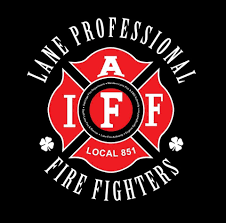Advantages of Forming a Fire District (Eugene + Springfield)
Creating a fire district from the Eugene and Springfield fire departments would bring several key advantages, rooted in the structural, financial, and governance differences between fire districts and city-run fire departments:
1. Stable, Dedicated Funding
Unlike city fire departments that rely on general city budgets—often competing with other priorities like parks, police, and roads—a fire district has its own taxing authority. That means:
- Predictable, reliable funding year after year.
- Funds are legally protected and used only for fire and EMS services.
- Budgeting decisions are made specifically for emergency response needs, not citywide tradeoffs.
2. Public Accountability Through Elected Leadership
Fire districts are governed by a locally elected board of directors, not city councils or mayors. This provides:
- Direct accountability to voters in the district.
- More responsive and transparent governance focused solely on fire/EMS service delivery.
- A clear line between public service oversight and city politics.
3. Regional Service, Not Limited by City Borders
A combined Eugene-Springfield fire district would allow:
- Shared resources across city boundaries, improving efficiency.
- Better coordination in staffing, apparatus deployment, and station locations.
- The ability to respond more flexibly across multiple jurisdictions, including nearby rural or urban growth areas that currently fall through the cracks.
4. Operational Efficiency
District formation enables consolidation of:
- Training, equipment purchasing, and leadership structures.
- Long-term capital planning for apparatus, stations, and technology upgrades.
- Recruitment and retention strategies tailored to the entire region—not siloed by separate city HR systems.
5. Long-Term Planning and Resiliency
A fire district has the ability to plan ahead with:
- 10–20 year capital improvement planning.
- More consistent investment in wildfire preparedness and urban response capacity.
- A strategic focus on growing call volumes, especially from medical emergencies, without being hindered by annual city budget shortfalls.
6. Consistent Service Expectations Across Communities
Right now, Eugene and Springfield residents might experience differences in staffing, equipment, or station brownouts depending on city budgets. A district would help:
- Standardized service levels for all neighborhoods.
- Reduce confusion over who is responsible for what.
- Ensure equity in emergency response across all neighborhoods served.
In Summary
Forming a fire district out of Eugene and Springfield's departments would create a modern, accountable, and efficient fire and EMS agency, with protected funding and regional flexibility. It would future-proof emergency services against budget instability and political shifts, while giving residents a greater voice in the safety of their communities.
Want to see how busy your fire department is?
Check out our ESF Alerts page.
Here you can see a snapshot of how busy Eugene Springfield Fire is. You will also be able to sign up for alerts so you can know the status of your resources in real time.
